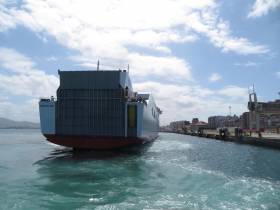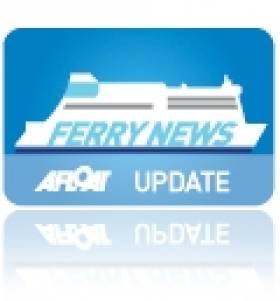Displaying items by tag: IrelandSpain route
New Winter Schedule for Ireland-Spain Ferry Will Allow Hauliers Bypass UK Over Brexit Fears
#ferry - The Ireland-Spain ferry route from Cork is to be expanded to a year-round service, the Evening Echo writes, to give hauliers for export and import options due to fears over Brexit.
Building on the launch of its new Cork to Santander route in 2018, Brittany Ferries has introduced a new winter sailing schedule designed to facilitate its Ireland to Spain freight traffic.
The Connemara vessel will now depart Cork on Mondays and Fridays at 11.30pm, arriving in Santander at 8am on Wednesday and Sunday mornings respectively.
This is the first time that Brittany Ferries will offer a year-round service out of Ireland. Its Cork to Roscoff route (serviced by the Pont-Aven), which has been operating for 40 years, will resume sailings in March 2019. The Connemara will also resume its weekly return sailing from Cork to Roscoff at this time.
Freight figures since the introduction of the new Cork to Santander route have been encouraging with nearly 2,600 freight units carried to date with demand rising significantly in the last month.
The change in schedule has been made in order to make the route more amenable to transporters in Ireland. For more click here.
#IrelandSpainFerry –Good news for those intending to travel between Ireland and Spain as LD Lines are to resume Rosslare route services starting on 20 June to St.Nazaire, France and onward to Gijón in northern Spain, writes Jehan Ashmore.
The first ever Irish-Spain route (landbridge via western France) was originally launched in January, however a period of dry-docking in March was also followed by an extended absence of service from the continental routes. However, LD Lines return of the first inbound sailing by ro-pax Norman Atlantic departs Gijón on 17 June followed by St. Nazaire on 18 June and arriving to Rosslare 19 June.
The corresponding first southbound sailing from Ireland departs Rosslare on the next day of Friday 20 June departing 21.00 and arriving St. Nazaire on Saturday at 1900hrs before reaching the final destination of Gijón in the Asturias region of Spain on Sundays at 1300hrs.
Northbound the vessel departs Gijón on Tuesdays at 2200 and St. Nazaire at 2359 on Wednesdays before arriving in Rosslare at 21.45 on Thursdays.
Gary Andrews of LD Lines stated; "We are delighted to confirm the resumption of our service, offering Irish hauliers the easiest routes to Western France and Spain. Beating the French driving ban by arriving in Spain on Sunday evenings, freight is placed ready for Monday morning deliveries across Spain, Portugal, France and further afield."
The routes are operated by the 550-passenger Norman Atlantic which as well as catering for tourist traffic can accommodate both regular freight types and most abnormal loads.
As previously reported, LD Lines also operate routes from Poole to Santander, Poole to Gijon and the direct Saint Nazaire – Gijón service.































































